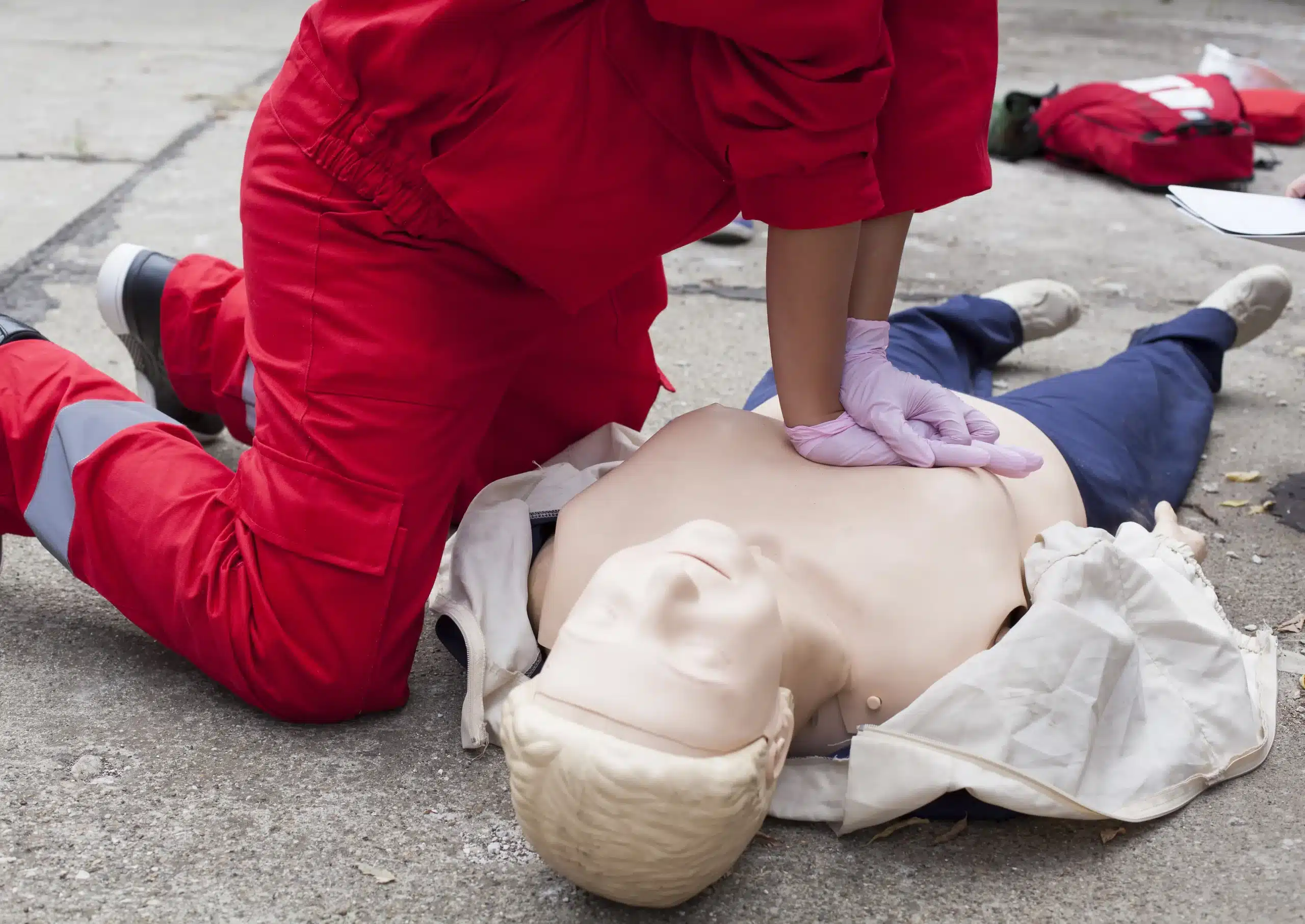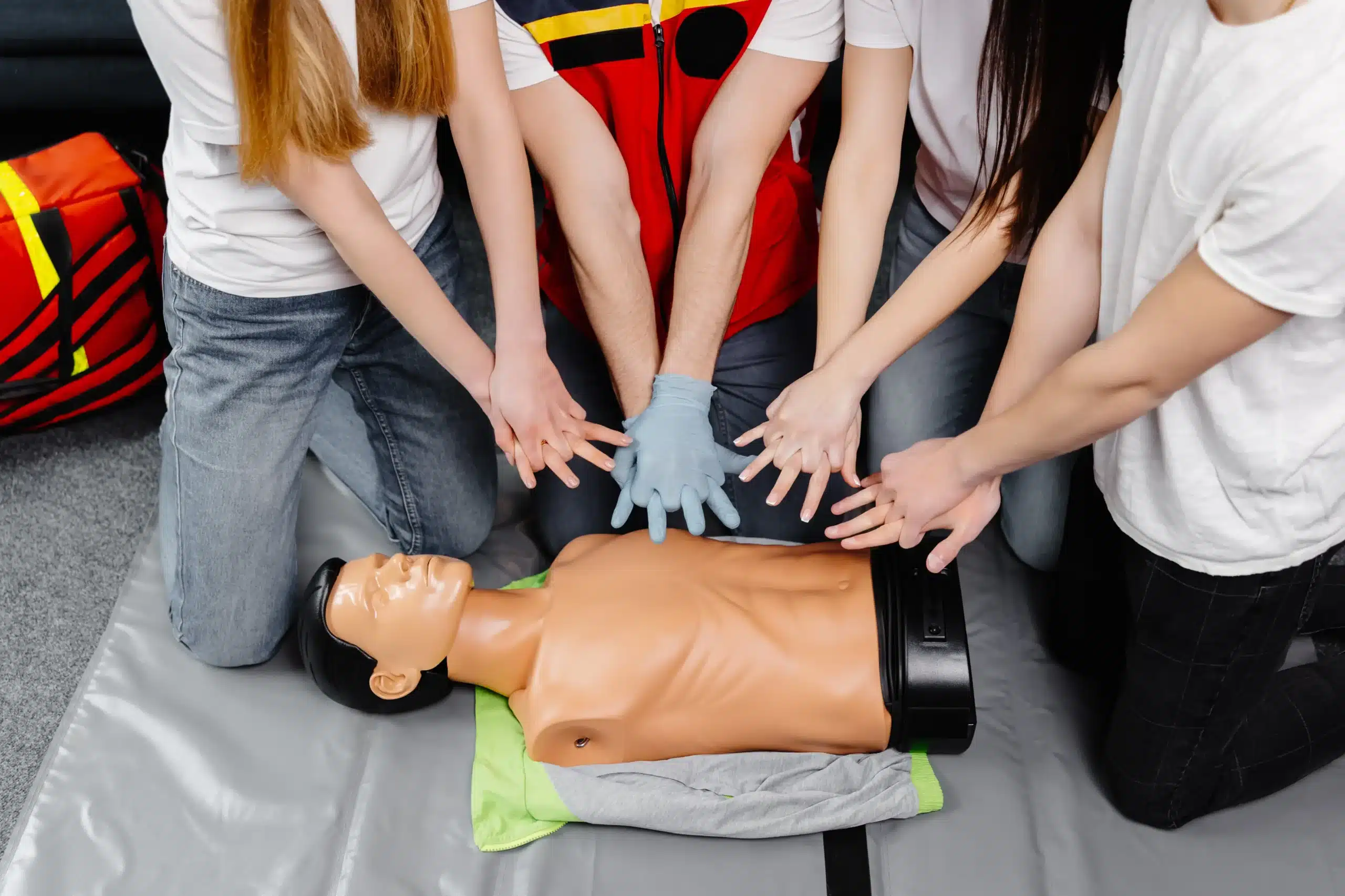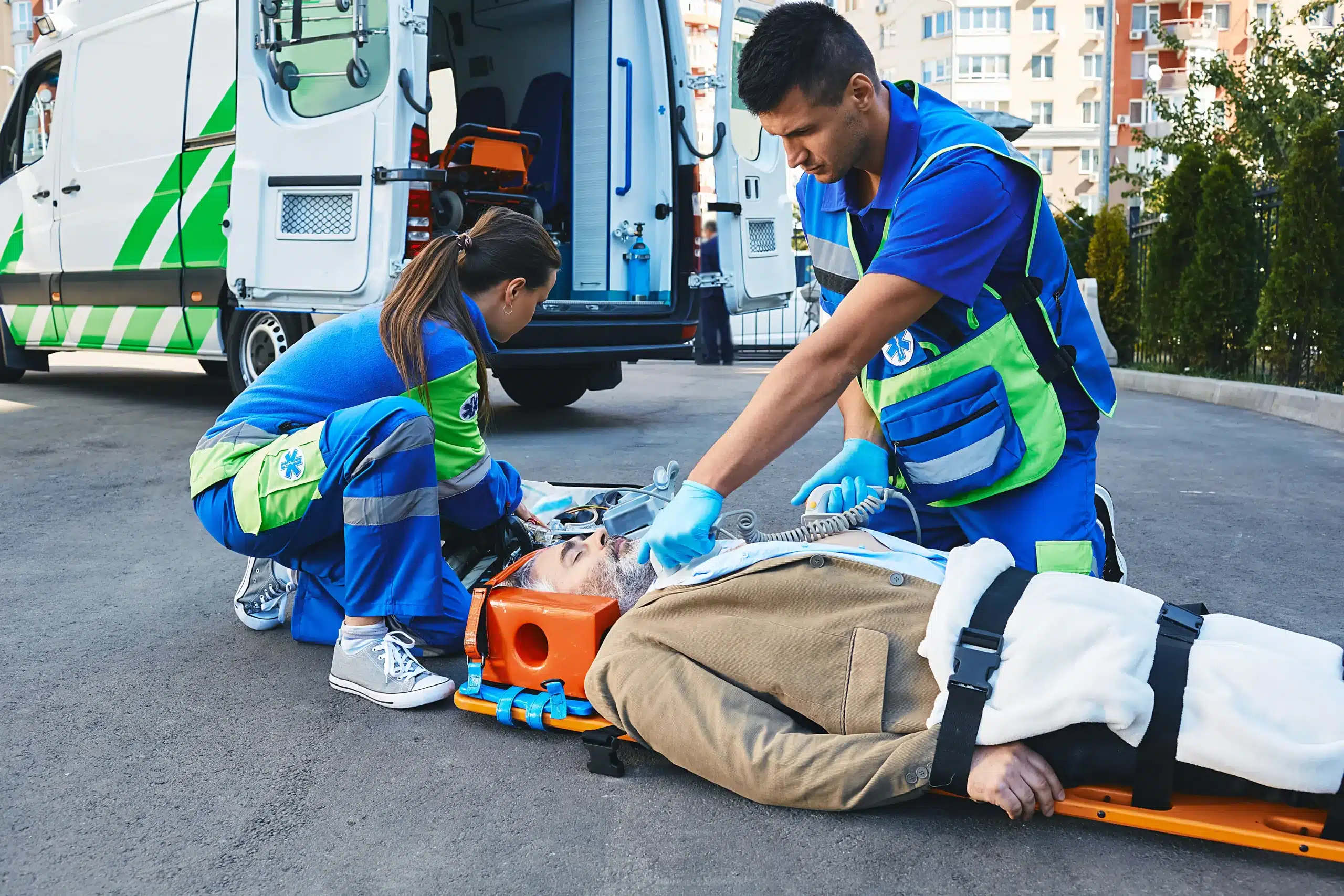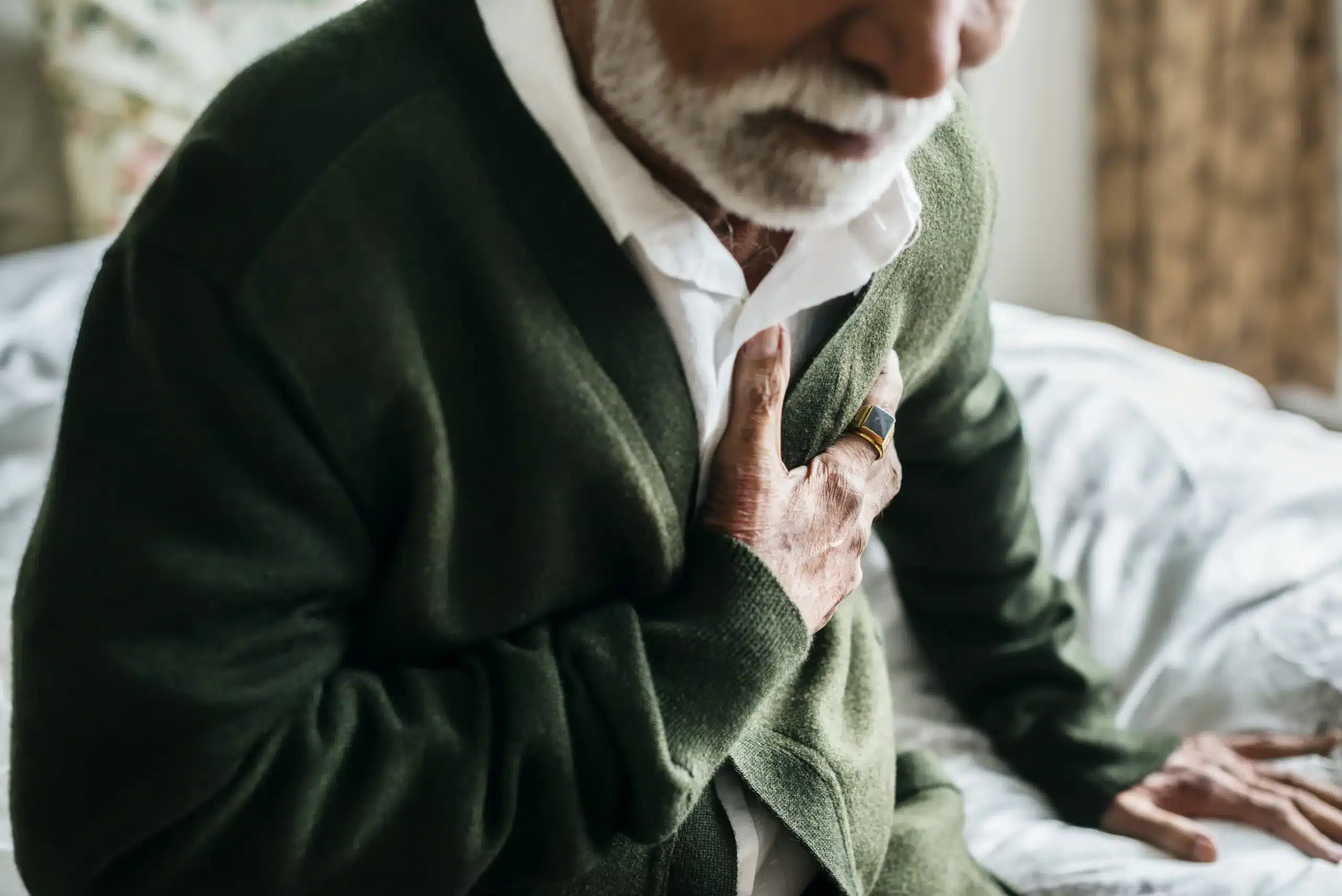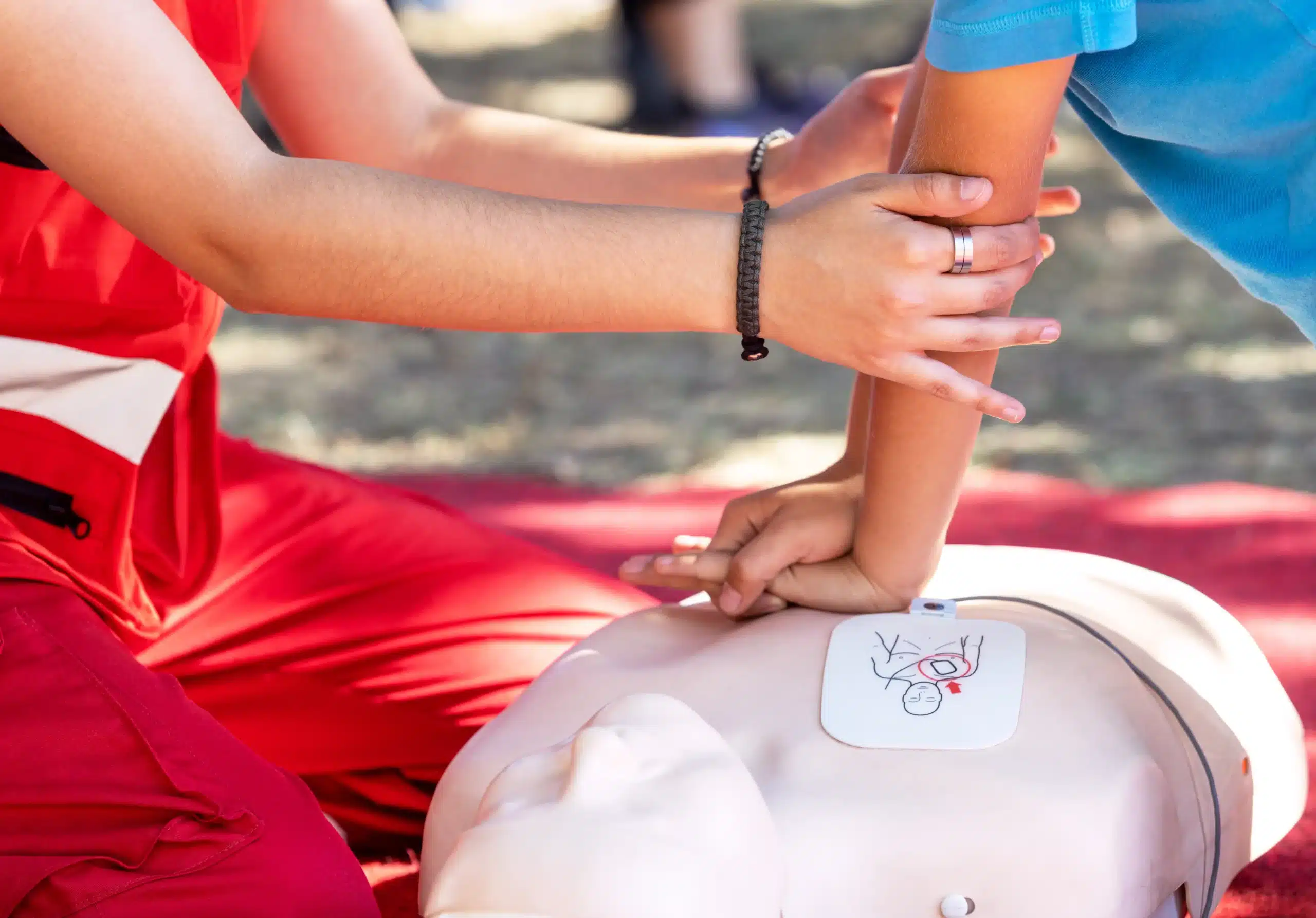Knowing what to do in a medical emergency can make all the difference. Basic Life Support (BLS) certification empowers you with the skills to respond effectively to life-threatening situations, from providing CPR and using an AED to managing choking emergencies. Whether you’re a healthcare professional or simply want to be prepared for anything, understanding the importance of BLS and finding a “BLS certification near me” can be a crucial first step. This guide will explore the ins and outs of BLS certification, what it entails, who needs it, and how to find the right training program for you. We’ll also discuss the difference between BLS and CPR, the various types of BLS courses available, and how to choose a reputable provider. Let’s equip you with the knowledge and confidence to act quickly and potentially save a life.
Key Takeaways
- BLS certification provides essential life-saving skills. Learn CPR, AED use, and ventilation techniques to confidently respond to medical emergencies and potentially make a life-saving difference.
- Find a BLS course that fits your lifestyle. Explore various options, including in-person, blended learning, and online formats, to find a reputable, accredited provider like Tracy CPR Classes that aligns with your schedule and learning preferences.
- Stay up-to-date with your BLS skills. Maintaining your certification through regular practice and renewal ensures you’re always prepared to provide effective care and respond confidently in critical situations.
What is BLS Certification & Why Do You Need It?
BLS, or Basic Life Support, certification teaches you the skills to respond to life-threatening emergencies. It’s a crucial credential for healthcare providers and anyone in a position to deliver immediate care. BLS equips you to assess a patient’s condition quickly, perform CPR, provide ventilation, and use an AED. These skills can dramatically improve the outcome of emergencies like heart attacks, strokes, near-drowning incidents, and other situations where breathing or heartbeat stops. Having a BLS certification means you’re prepared to act decisively and potentially save a life.
Key BLS Skills
BLS certification covers core skills needed to manage a medical crisis. You’ll learn high-quality CPR for adults, children, and infants, including how to use an AED. The training also covers how to relieve choking and provide rescue breaths. BLS courses emphasize teamwork and clear communication, essential for effective emergency response. These skills are regularly updated to reflect the latest scientific guidelines from organizations like the American Heart Association, ensuring your training is always current.
Who Needs BLS Certification?
BLS certification is vital for many professionals. It’s often mandatory for healthcare providers like doctors, nurses, paramedics, and other medical personnel. Many other professions, including lifeguards, firefighters, teachers, and childcare providers, also require or benefit from BLS training. Even if it’s not required for your job, having these skills can make you a valuable asset in any workplace or community setting. Check with your employer or professional organization to see if BLS certification is recommended or required for your career path. For those in and around the Tracy, CA area, Tracy CPR Classes offers convenient options.
BLS vs. CPR: What’s the Difference?
While both are life-saving techniques, BLS and CPR have distinct differences. CPR focuses on chest compressions and rescue breaths for individuals experiencing cardiac arrest. BLS encompasses CPR but goes further, covering a broader range of skills, including using an AED, bag-mask ventilation, and advanced airway management. Think of CPR as a foundational element within the more comprehensive framework of BLS. BLS certification is typically geared towards healthcare professionals and first responders, while CPR training is valuable for anyone who wants to learn basic life-saving techniques. Both certifications are offered by organizations like the American Red Cross and the American Heart Association.
Find BLS Certification Classes Near You
Finding the right BLS certification course means understanding your options and what best suits your schedule and learning style. Let’s explore the different formats available.
Local & Online Options
Locating a BLS course near you is easier than you think. Providers like Tracy CPR Classes offer various options, from traditional in-person classes to blended learning that combines online coursework with hands-on skills sessions. This flexibility helps you find a course that fits your busy schedule. You can also explore fully online options, though these typically require an in-person skills check.
Types of BLS Certification Courses
In-Person Classes
In-person BLS classes provide a structured learning environment with direct interaction with an instructor. This format allows for immediate feedback, hands-on practice, and the opportunity to ask questions. Safety Training Seminars offers in-person, AHA-certified courses in BLS, ACLS, PALS, CPR, and First Aid in Tracy. Their focus on community safety and convenient scheduling makes them a great local option.
Blended Learning
For those who prefer a more flexible approach, blended learning combines online coursework with a shorter, in-person skills session. This allows you to complete the cognitive portion of the course at your own pace, then demonstrate your skills to a certified instructor.
Online Certification
Fully online BLS certification courses offer maximum flexibility, allowing you to complete the coursework anytime, anywhere. However, most online certifications still require an in-person skills check to ensure competency. This practical component is essential for providing effective patient care, a crucial aspect of professional development for healthcare professionals.
Tracy CPR Classes: Your Local BLS Training
Tracy CPR Classes specializes in American Heart Association (AHA) certified courses, including BLS, CPR, ACLS, PALS, and First Aid. Serving Tracy, Stockton, and Lodi, we’re committed to providing high-quality training and excellent customer service. Our woman-owned AHA Training Center issues certification cards valid for two years, giving you confidence in your skills and credentials. We offer various course formats, so visit our website to find the perfect BLS class for you.
How Much Does BLS Certification Cost?
Knowing the price range for BLS certification helps you budget effectively. Several factors influence the final cost, so let’s break them down.
Typical BLS Course Prices
BLS certification costs in Tracy, California, fluctuate based on where you train and whether you’re getting initially certified or renewing an existing certification. Expect some variation, but understanding the typical price range helps you plan. Check with your chosen provider, like Tracy CPR Classes, for the most up-to-date pricing.
Factors Affecting Cost
As with most training programs, the course type (CPR/AED, BLS, ACLS, PALS) and format (in-person, online, or blended learning) influence the cost. In-person training often includes hands-on practice with equipment and personalized instruction, which can affect pricing. Blended learning, combining online modules with in-person skills sessions, offers a balance of convenience and practical experience. Purely online BLS courses are often more budget-friendly.
Discounts & Financial Assistance
Combining courses often leads to savings. Many training centers offer discounts for CPR and First Aid training bundled together. This is a smart option if you need both certifications, allowing you to learn two valuable skill sets efficiently. It’s always worth asking your chosen training center about potential discounts or financial assistance programs.
Employer Support & Reimbursement
Many employers cover or reimburse the cost of BLS certification, especially in healthcare settings. Check with your HR department about existing programs or if they can arrange on-site training. This streamlines the certification process for everyone and minimizes disruption to your workday. Even if your employer doesn’t directly cover the cost, they may offer professional development funds you can use. It never hurts to ask!
How to Choose a BLS Provider
Finding the right BLS provider is crucial for a valuable learning experience. Here’s what to consider when making your decision:
Evaluating Course Quality & Accreditation
First, ensure any program you choose is accredited by a recognized organization like the American Heart Association (AHA) or the American Red Cross. This guarantees the training meets industry standards and covers essential skills. High-quality BLS training is critical for healthcare providers to handle life-threatening emergencies. Look for providers with experienced instructors, current materials, and positive reviews. A good program will teach you not only the steps but also the reasoning behind them.
Scheduling & Convenience
Life gets busy, so finding a course that works with your schedule is essential. Consider whether you prefer in-person classes, blended learning (a mix of online and in-person), or a fully online option. Think about your learning style and how much flexibility you need. Also, check the course location and ease of access. Local providers like Tracy CPR Classes often offer various schedules and formats. Blended learning, combining online coursework with a shorter in-person skills session, offers excellent flexibility.
Popular BLS Certification Providers
Several organizations offer BLS certification. Here are a few well-known options:
American Heart Association
The AHA is a leading provider of BLS certification, known for its comprehensive training. They offer various courses for healthcare professionals and the general public.
American Red Cross
The American Red Cross is another reputable organization offering various CPR and BLS certification courses. They provide options for in-person, online, and blended learning formats.
National CPR Foundation
The National CPR Foundation offers various CPR and BLS courses designed for both healthcare professionals and the general public.
ProTrainings
ProTrainings focuses on online and blended learning for BLS certification, allowing students to learn at their own pace.
Tracy CPR Classes
Tracy CPR Classes specializes in AHA-certified courses, including BLS, CPR, ACLS, PALS, and First Aid. They serve Tracy, Stockton, and Lodi, CA.
Get Your BLS Certification: Prepare & Renew
Getting your BLS certification is a straightforward process. This section walks you through what to expect during your course, how to prepare for success, and why staying current with your credentials matters.
What to Expect in Your BLS Course
BLS training equips healthcare providers with crucial skills to handle life-threatening emergencies. Your course will cover core concepts like high-quality CPR for adults, children, and infants, along with techniques for relieving choking and using an AED. You’ll also learn how to recognize and respond to various medical emergencies, such as heart attacks and strokes. Expect a combination of lectures, demonstrations, and hands-on practice. Active participation is key to mastering these lifesaving skills. BLS courses, like those offered by Tracy CPR Classes, emphasize practical application to build your confidence and competence.
Tips for Certification Success
A little preparation goes a long way. Before your BLS class, review the course materials. This refresher will help you absorb the information more easily during training. Familiarize yourself with the latest American Heart Association guidelines for BLS, as they can change periodically. Practice the skills you’ll be learning, such as chest compressions and rescue breaths. Don’t hesitate to ask your instructor any questions—clarifying doubts early on ensures a solid understanding. This article highlights common pitfalls to avoid during recertification.
Maintain & Renew Your BLS Credentials
Your BLS certification is typically valid for two years. Staying up-to-date with your BLS recertification is essential for all healthcare professionals. It ensures you maintain the skills and knowledge to respond effectively in critical situations. Regularly reviewing the material and practicing your techniques will make the recertification process smoother. Keep track of your certification expiration date and plan your renewal course in advance. Tracy CPR Classes offers various convenient options for BLS renewal, making it easy to maintain your credentials. Staying updated on recertification requirements helps you adapt to evolving research and guidelines in emergency care, as discussed here.
How Quality BLS Training Impacts Patient Outcomes
High-quality BLS training directly impacts patient outcomes. Immediate and effective BLS is a critical link in the chain of survival, increasing the chances of a positive outcome. By earning and maintaining your BLS Provider Certification, you demonstrate your commitment to providing the best possible patient care. Staying current with evolving practices in emergency care ensures you’re equipped to handle any situation confidently and competently. This commitment to ongoing training benefits your patients and strengthens your professional credibility. The Emergency and Safety Institute emphasizes the importance of BLS provider certification for optimal patient care.
Related Articles
- BLS Certification in Tracy: Your Comprehensive Guide – Tracy CPR Classes
- BLS Classes in Lodi: Your Complete Guide – Tracy CPR Classes
- BLS HeartCode in Tracy: Blended Learning CPR – Tracy CPR Classes
- Get BLS Certified in Stockton: Top Training – Tracy CPR Classes
- Find BLS Classes Near Me: Your Complete Guide – Tracy CPR Classes
Frequently Asked Questions
How often do I need to renew my BLS certification? BLS certification is typically valid for two years. It’s essential to renew your certification before it expires to maintain your credentials and ensure your skills are up-to-date.
What’s the difference between BLS and CPR certification? CPR is a core component of BLS, focusing on chest compressions and rescue breaths. BLS encompasses CPR but includes a broader range of skills like using an AED and advanced airway management. BLS certification is generally geared towards healthcare professionals, while CPR training is valuable for anyone.
What if my employer doesn’t require BLS certification? Even if it’s not a job requirement, BLS certification equips you with valuable life-saving skills applicable in any setting. It can make you a more confident and prepared individual, both at work and in your personal life. It can also enhance your resume and open up new career opportunities.
Are online BLS certification courses accepted? Yes, many online BLS courses are accepted, but they usually require an in-person skills check component. This practical assessment ensures you can perform the necessary skills effectively. Be sure to choose an accredited online program that meets industry standards.
How can I find BLS classes near me? A quick online search for “BLS classes near me” is a great starting point. You can also check with local hospitals, community centers, and training providers like Tracy CPR Classes. Many organizations offer various course formats and schedules to fit your needs.

